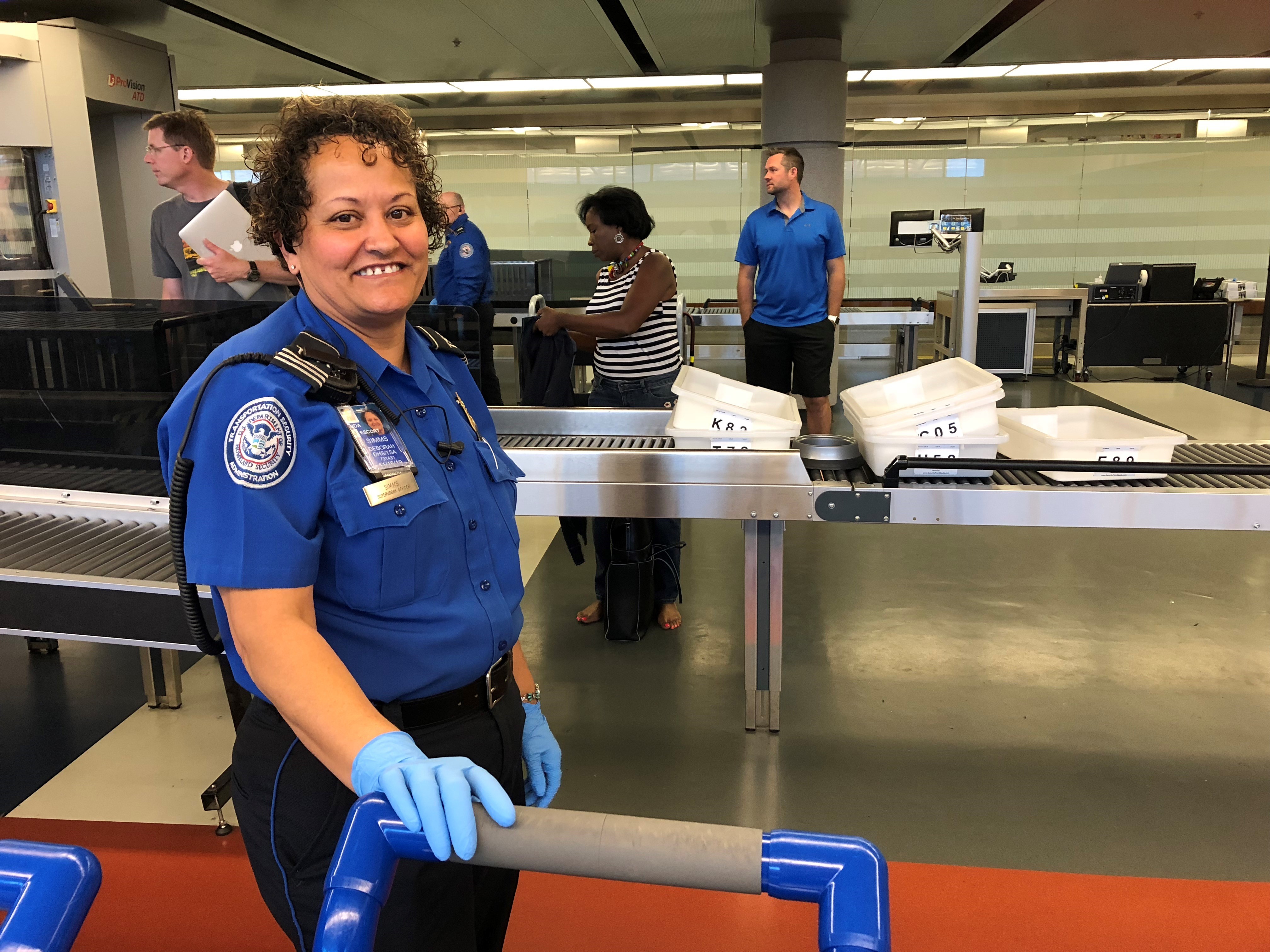RICHMOND, Va. – You come to an airport checkpoint hoping to catch your flight and arrive at your destination safely and on time. Seems simple enough, but sometimes something you weren’t expecting comes up at the checkpoint and it slows you down.
Meet Deborah Simms and Ryan Seymour, Transportation Security Administration officers at Richmond International Airport (RIC). Simms is a veteran supervisory TSA officer who has worked for the agency since 2002 and Seymour has worked for TSA since 2015. When asked what they want travelers to know about going through the checkpoint, both were eager to share some tips to guide passengers through the checkpoint process efficiently and eliminate confusion.
First of all, Simms recommends travelers “come early to the airport so you’re prepared for anything—a long line, a busy ticket counter, making space for all of the flight crews to come through the checkpoint.” The first flight out of RIC is at 5 a.m., so the checkpoint opens at 4 a.m. By 4:30 a.m. there’s a long line, she points out. People sometimes think that if they catch the first flight out in the morning that there won’t be a line, but that’s an airport’s “rush hour.” She points out that TSA will not move late-comers to the front of the line.

Seymour stresses the importance of being prepared when travelers reach the TSA ticket document checking podium. Have the boarding pass and ID in hand when stepping up to the podium. That’s not the time to fumble for your wallet to pull out your ID. It should be out and ready to hand to the TSA officer, he says. He also points out that if traveling with a mobile boarding pass, it’s a good idea to print out a paper boarding pass as back-up because sometimes the Wi-Fi signal at checkpoints isn’t strong and people may have difficulty getting it onto their Smartphone screen at the moment it is needed. “Consider taking a screen shot of the mobile boarding pass too, because we can scan a screen shot,” he suggests.
Liquids, gels and aerosols that are 3.4 ounces or larger are not allowed through the checkpoint, so pack the large suntan lotion, insect repellent spray, toothpaste, shampoo, shaving cream, and other large beauty products in your checked bag, Simms advises. One of the most common reasons that carry-on bags require TSA officers to search inside is for the oversize liquid, gel or aerosol. Those items will not be permitted beyond the checkpoint. Avoid the time it takes for a TSA officer to conduct a “bag check” by packing those items in a checked bag. Unsure if an item is defined as a liquid, gel or aerosol? A good rule of thumb is that if the item can be spilled, sprayed, spread, pumped or poured, it’s defined as a liquid, gel or aerosol.
“It’s good to remember that children age 12 and under and adults age 75 and older can leave their shoes on at the checkpoint,” Seymour says. “Often kids will see their parents taking off their shoes and the kids will be watching their parents and start doing the same thing, but in this case, kids can leave their shoes on” so don’t waste time by having your youngsters take off their shoes.

All personal electronic devices larger than a cell phone need to be removed from carry-on bags to allow for a good clear X-ray image to ensure that nobody has tampered with the device to conceal something inside. This includes laptops, tablets (e.g., iPads), e-readers (e.g., Kindles and Nooks), Bluetooth speakers and camera bodies. Failing to do so will mean the carry-on bag being pulled for a bag search, thus extending the time travelers spend at the checkpoint. “Sometimes people have multiple laptops,” Simms says, recalling the time that one traveler had four laptops. “When you take your electronics out of your carry-on bags, don’t stack them. There should be nothing above or below each one so we can get a good clear X-ray image to make sure there is nothing concealed inside,” she says. “We have lots of bins. Use as many as you need.”
If you require specialized assistance due to a medical or health condition or for any other reason, the TSA officers recommend calling the TSA Cares line 72 hours in advance of a flight at 855-787-2227 so you know what to expect at the checkpoint. Travelers can request assistance from a TSA Passenger Support Specialist who can connect with the individual to guide him/her through the checkpoint.
Lastly, Seymour emphasizes that travelers should listen to what the TSA officers are saying. Typically, they are providing helpful guidance as to what travelers should do at the checkpoint. “We’re there to help get passengers through the process efficiently,” he says. “Sometimes people will be focused on their liquids and forget to remove their electronics or they’ll be focused on their electronics and forget to remove their shoes. But we’ll remind you, so it’s a good idea to listen to the guidance we are providing.”
